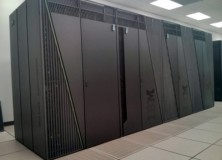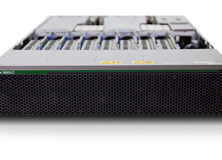The development of SciNet at the University of Toronto stretches back to 1999 with the timing of an award of from the Canada Foundation for Innovation (CFI) and the Province of Ontario for the founding of PSciNet, an acronym which then stood for the Physical Sciences computing NETwork. This funding was received in response to an application prepared by a group
consisting of astrophysicists from the Canadian Institute for Theoretical Astrophysics, chemical physicists from the Department of Chemistry and planetary physicists from the Department of Physics. The funds were invested to acquire three distinct computer systems, each one designed to serve the special needs of each of these collaborating groups and to be operated by them as separate systems.
A second proposal to CFI for further PSciNet development was funded in 2003, this time to a group consisting of high energy experimental particle physicists from the Department of Physics, planetary physicists from the Department of Physics and a third group consisting of aerospace and mechanical engineers from the University of Toronto Institute for Aerospace
Studies (UTIAS) and from the Department of Mechanical and Industrial Engineering. This funding was employed to acquire two new cluster systems as well as an upgrade to the vector system employed by the planetary physics group.
The SciNet consortium, with the “P” for “Physical” dropped from the acronym, was established in 2005 through the continuing collaboration of all five of these previously involved groups, joined by their colleagues from the areas of computational biology, genomics and bioinformatics at both the University of Toronto and the ten research hospitals affiliated with it. SciNet participated in developing the Compute Canada response to the 2006 National Platform Fund (NPF) call for proposal from CFI and was allocated $15M of the total amount awarded to Compute Canada in December 2006. The CFI award was matched by the Ontario provincial government and supplemented by the University of Toronto.
Complications in administering the NPF award across 7 consortia and more than 15 institutions delayed the issue of the SciNet Request for Proposals (RFP) until Jan 2008. After reviewing all proposals a final contract with IBM was signed in July 2008 for the construction of the datacentre (in an existing building) and the installation of two clusters and storage. Renovations began in late Aug 2008, the first cluster (the TCS) and storage system were installed in November and opened to friendly users in December, the datacentre was fully completed in February 2009 and the installation of the largest cluster (the GPC) began in March with the arrival of the first IBM iDataPlex servers based on the brand-new Intel Nehalem CPU
architecture. Friendly user period for the GPC began in May and both systems were fully opened to researchers from across Canada at the beginning of August 2009.
Several smaller test systems have been acquired and operated by SciNet since, but no major refresh was available until CFI’s 2015 Cyberinfrastructure Initiative. This initiative awarded a grant through Compute Canada that led to a refresh of Canadian computing resources in the form of a cloud system, Arbutus, and two general purpose clusters, Graham and Cedar, in 2017, located in British Columbia and Ontario, and a “large parallel” supercomputer, Niagara, at SciNet, in 2018 (note: a third General Purpose cluster was installed in 2019 in Montreal).




